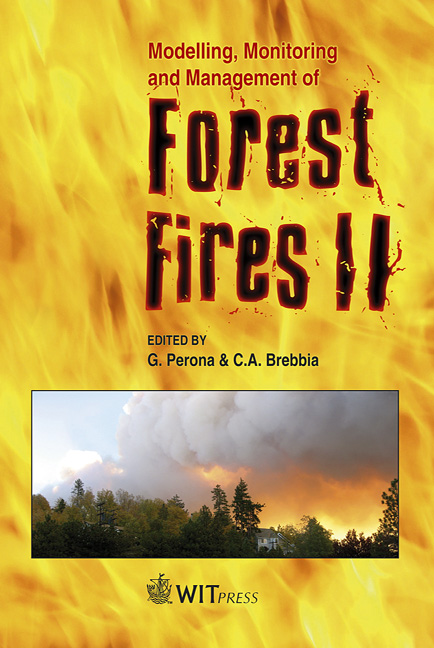A Comparative Study Of Two Alternative Wildfire Models, With Applications To WSN Topology Control
Price
Free (open access)
Transaction
Volume
137
Pages
12
Page Range
25 - 36
Published
2010
Size
989 kb
Paper DOI
10.2495/FIVA100031
Copyright
WIT Press
Author(s)
G. Koutitas, N. Pavlidou & L. Jankovic
Abstract
In this paper two wildfire modelling methods are compared in terms of performance, scaling up flexibility and speed of model execution. The InteSys model is based on Cellular Automata (CA). Simple rules are applied to each cell, interacting with neighbouring cells. The cell based structure reflects the object oriented nature of the model, as each cell is a working copy of a cell class – a blueprint that enables easy expansion, taking into account undergrowth, tree spacing, moisture content, air temperature, solar radiation, wind velocity, terrain gradient, tree flammability, and other parameters. The CD-AUTH model is based on the Cell-DEVS technique operating also on a domain discretized to interacting cells, incorporating the same as above physical properties, variable in time and coupled to a low level surface wind module. The model applies the Rothermel approach with respect to the fire propagation considering the Huygens ellipse of propagation. Advantages and disadvantages of the two models are discussed on the basis of comparative simulations over hypothetical fire scenarios on a digital map. Important observations and conclusions are also drawn concerning the deployment of wireless sensor networks (WSN) for wildfire detection. Finally, a network topology control algorithm that utilizes the fire prediction algorithms is presented and yields energy efficiency of the WSN, providing with high time resolution data for real time monitoring. Keywords: wild fire modelling techniques, cellular automata, discrete event simulations, cell-DEVS, wireless sensor networks WSNs, network topology control, energy efficiency WSNs.
Keywords
wild fire modelling techniques, cellular automata, discrete event simulations, cell-DEVS, wireless sensor networks WSNs, network topology control, energy efficiency WSNs





